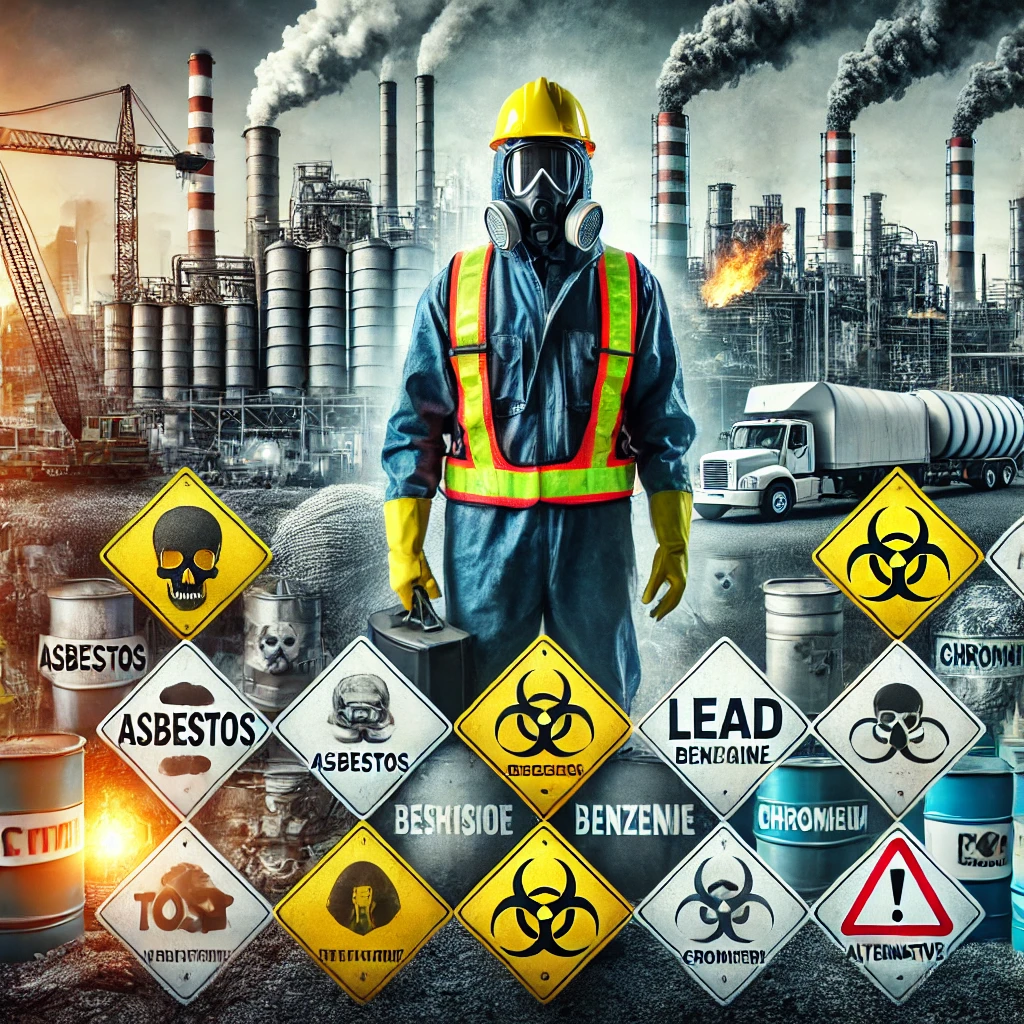User Ideas / Prospects
In India, the regulation of carcinogenic materials is overseen by several national agencies and laws, aimed at protecting public health and the environment. India has taken steps to control the use of certain carcinogenic substances, although enforcement and awareness can vary across sectors. Below is an overview of the governing bodies, bans, and regulations related to carcinogenic materials in India.
1. Asbestos- Status in India:
- Asbestos is not fully banned in India. The use of chrysotile (white asbestos) is still permitted and widely used in industries such as construction (roofing sheets), despite global recognition of its severe health risks.
- However, blue and brown asbestos (the more dangerous forms) have been banned.
- Governing Bodies:
- Ministry of Environment, Forest and Climate Change (MoEFCC): Regulates asbestos-related industries under environmental laws.
- Directorate General of Mines Safety (DGMS): Oversees the safety of workers exposed to asbestos, particularly in mining and processing industries.
- Factories Act (1948): Includes asbestos on the list of substances that require safety measures in factories.
- Status in India:
- The use of hexavalent chromium is restricted, particularly in leather tanneries and electroplating industries. Chromium VI is subject to environmental regulations and worker safety guidelines.
- Governing Bodies:
- Central Pollution Control Board (CPCB): Regulates chromium discharge and air emissions, particularly from industries like leather tanning and electroplating.
- Bureau of Indian Standards (BIS): Sets permissible limits for hexavalent chromium in products.
- Factories Act: Enforces exposure limits and safety measures for workers handling chromium.
- Status in India:
- Benzene is regulated due to its carcinogenic nature, with limits placed on its use in industrial processes and consumer products.
- Governing Bodies:
- CPCB: Sets limits on benzene emissions, particularly in industries such as oil refineries, petrochemicals, and paints.
- Petroleum and Natural Gas Regulatory Board (PNGRB): Regulates benzene content in fuels.
- Indian Ministry of Labour: Benzene exposure in the workplace is regulated under the Factories Act, which mandates limits on permissible exposure levels.
- Status in India:
- Formaldehyde is widely used in India in industries such as textiles, furniture, and construction. However, its use is regulated, particularly in formaldehyde-emitting products like particleboard and plywood.
- Governing Bodies:
- BIS: Sets standards for formaldehyde emissions in consumer products such as wood panels.
- Ministry of Environment, Forest and Climate Change (MoEFCC): Regulates environmental exposure and emissions of formaldehyde.
- Status in India:
- PVC is widely used in construction (pipes, flooring), packaging, and other industries. However, the production and disposal of PVC, which releases carcinogenic dioxins, are monitored by the government.
- Governing Bodies:
- CPCB: Regulates PVC waste management and disposal to limit environmental pollution.
- BIS: Establishes standards for the safe production and use of PVC products.
- Status in India:
- Crystalline silica exposure is prevalent in industries like construction, mining, and stone-cutting. Regulations exist for controlling workplace exposure.
- Governing Bodies:
- DGMS: Monitors safety standards in mining and construction to reduce silica dust exposure.
- Factories Act: Mandates safety protocols for industries where workers are exposed to crystalline silica.
- Status in India:
- Cadmium is restricted, particularly in industries like battery manufacturing, electronics, and metal plating. Regulations focus on reducing cadmium emissions and exposure.
- Governing Bodies:
- CPCB: Enforces limits on cadmium waste and emissions, particularly from industries.
- MoEFCC: Regulates environmental exposure to cadmium through hazardous waste management rules.
- Status in India:
- India has taken significant steps to regulate lead use, particularly in paints, batteries, and pipes. Lead was banned from gasoline in the 2000s, and lead content in paints and children’s products is now regulated.
- Governing Bodies:
- CPCB: Manages lead emissions and waste, particularly in the paint, battery, and construction industries.
- BIS: Sets standards for lead levels in consumer products, such as paints and toys.
- Ministry of Health and Family Welfare: Oversees lead regulations in consumer products like cosmetics.
Central Pollution Control Board (CPCB):
- Under the Ministry of Environment, Forest and Climate Change (MoEFCC), the CPCB sets pollution control norms and manages hazardous waste. It enforces restrictions on carcinogenic materials such as asbestos, chromium, and benzene in industries.
Directorate General of Mines Safety (DGMS):
- A government agency responsible for safety in mining and quarrying industries, focusing on minimizing exposure to harmful substances like asbestos and silica dust.
Bureau of Indian Standards (BIS):
- The BIS sets product safety standards for consumer goods, including limits on harmful chemicals like lead, formaldehyde, and cadmium in products like paints, toys, and electronics.
Factories Act, 1948:
- This key legislation regulates the health and safety of workers in India’s industrial sectors. It includes provisions for protecting workers from carcinogens such as asbestos, benzene, and chromium VI by setting exposure limits and enforcing safety measures.
Environmental Protection Act, 1986:
- Provides the framework for the protection and improvement of the environment, including the regulation of hazardous substances and carcinogens. It enables the government to ban or restrict dangerous chemicals and materials.
Hazardous and Other Wastes (Management and Transboundary Movement) Rules, 2016:
- This regulation governs the management, disposal, and transboundary movement of hazardous waste, including carcinogenic materials like asbestos and cadmium.
- Enforcement Issues: While regulations exist, enforcement can be uneven across sectors, particularly in informal industries like construction and small-scale manufacturing, where worker safety practices are less stringent.
- Public Awareness: Awareness about the health risks of carcinogens is growing, but there is still a significant gap in understanding the long-term effects, particularly in rural and less-developed regions.
India has implemented numerous regulations to control the use and exposure to carcinogenic materials, but enforcement and compliance are often inconsistent. Key governing bodies like the CPCB, BIS, and DGMS are working to reduce exposure to harmful substances, but greater enforcement and public awareness efforts are needed to reduce the risks effectively.

